- Home
- Louis L'Amour
Sacketts 00 - The Sackett Companion (v5.0)
Sacketts 00 - The Sackett Companion (v5.0) Read online
THE SACKETT COMPANION
A Bantam Book / November 1988
Produced by Ink Projects
Maps by William B. and Alan McKnight:
Sackett’s Land. To The Far Blue Mountains, Lando, Mustang Man.
The Lonely Men, Treaure Mountain, and The Sackett Brand.
All other maps by Alan McKnight.
All rights reserved.
Copyright © 1988 by Louis L’Amour.
No part of this book may be reproduced or transmitted in any form or by any means, electronic or mechanical, including photocopying, recording, or by any information storage and retrieval system, without permission in writing from the publisher.
For information address: Bantam Books.
Library of Congress Cataloging-in-Publication Data
L’Amour, Louis, 1908–1988
The Sackett companion.
1. L’Amour, Louis, 1908–1988—Handbooks, manuals, etc. 2. L’Amour, Louis, 1908–1988—Characters—Sackett family. 3. Western stories—Handbooks, manuals, etc. 4. Sackett family (Fictitious characters)—Handbooks, manuals, etc. I. Title.
PS3523.A446Z459 1988 813’.52 88-47530
eISBN: 978-0-307-49038-4
Bantam Books are published by Bantam Books, a division of Random House, Inc. Its trademark, consisting of the words “Bantam Books” and the portrayal of a rooster, is Registered in U.S. Patent and Trademark Office and in other countries. Marca Registrada. Bantam Books, 1540 Broadway, New York, New York 10036.
v3.1
CONTENTS
Cover
Title Page
Copyright
Editors’ Note
INTRODUCTION
SACKETT’S LAND
TO THE FAR BLUE MOUNTAINS
THE WARRIOR’S PATH
JUBAL SACKETT
RIDE THE RIVER
THE DAYBREAKERS
SACKETT
LANDO
MOJAVE CROSSING
MUSTANG MAN
THE LONELY MEN
GALLOWAY
TREASURE MOUNTAIN
LONELY ON THE MOUNTAIN
RIDE THE DARK TRAIL
THE SACKETT BRAND
THE SKY-LINERS
THE MAN FROM THE BROKEN HILLS
A SACKETT GENEALOGY AND FAMILY TREE
IN THE BEGINNING, THERE WAS THE STORY.…
GLOSSARIES FOR THE SACKETT NOVELS
FICTIONAL AND HISTORICAL CHARACTERS
PLACES
RANCHES AND BRANDS
SALOONS, TAVERNS, RESTAURANTS, INNS, AND HOTELS
RIFLES AND PISTOLS
BOOKS
SHIPS
SONGS
NARRATORS
CHRONOLOGY
Dedication
Other Books by This Author
About the Author
EDITORS’ NOTE:
Louis L’Amour died on June 10, 1988. He completed the manuscript for THE SACKETT COMPANION some months before his death, and throughout it he refers to future stories and characters whose tales were still to be told. Rather than delete these references, we felt his many readers would be interested in knowing what he hoped to write.
A question I am often asked is: How long does it take to write a book?
It seems to me a ridiculous question. If the questioner stopped to think, he or she would understand that it takes as long as is necessary. Is the book to be two hundred pages or two thousand? Is much research required or very little? No book can be written without some research, for no matter how much one believes he knows, it will always prove to be less than enough.
I rarely do research on a book I am writing. That research has, except for the unexpected detail, been done long before. By the time I begin to write, I am saturated with the background of my story. Yet one never knows enough. There is always more to be learned.
Another question I am asked at least once a month or during the question-and-answer period at a lecture: What book can I read to learn about the West?
What part of the West? During what period? What phase of western settlement?
I have read, scanned, or browsed through literally thousands of books, documents, diaries, and reports and am only beginning to understand what happened; how, why, when, and where it happened; to say nothing of all the problems and influences that contributed to what the West was at various stages in history.
No story of the frontier can be written without knowledge of the physical environment, of the terrain, vegetation, animal, and insect life. Each state differs from every other, and within each state there are many widely diverse environments. Montana is unlike Texas, and both differ in many respects from Arizona, New Mexico, Nevada, or Colorado.
The Plains states present other problems, as do those rimming the Pacific. Oddly enough, some readers have never realized that California was as much a cowboy state as any other, and her vaqueros were among the greatest riders and ropers this country ever saw. It was second in cattle population only to Texas.
Oregon, Washington, and Idaho had their big ranches, their stagecoach holdups, and gunfighters, so the West was and is a very large area, indeed.
To really know the western frontier requires a lifetime of study. And there will always be those unexpected pockets of history that have developed in relative isolation so far as the reading public is concerned.
The western American frontier went through many phases of development. The Spanish who settled in the Southwest and the French in the North and Northwest were the first. Then the so-called Long Hunters (because they were out a long, long time!) ventured west of the Appalachians. Daniel Boone, who is considered by many to be the original western pioneer, was, in fact, preceded by many others. Gabriel Arthur was living with the same Indians Boone was to meet, but one hundred years earlier, and he was but one of many.
Our histories are based largely upon official or semi-official reports that appeared at a time when only a small number of people could read and write. Few of the hunters and explorers even thought of writing what had happened to them or where they had been. In our western histories, and indeed, in the history of the world, we are basing all our conjectures on only a small number of accounts. Moreover, most of these come from a relatively few countries; reports from elsewhere in the world are rarely considered.
At a rough guess, I would estimate that ninety percent of the fiction written about the West has concerned the Plains states or those few others that were in the cattle business or provided a trail westward that moved from Missouri to California. For some reason the man on horseback has always intrigued, whether he be knight in armor, a Bedouin of the desert, or an American cowboy. He has always been a figure of romance.
Is it because he is mobile? Because he can ride away into the sunset? Or that he comes from out of nowhere, a mysterious, romantic figure who appears without warning and is seemingly free of everyday trials and troubles?
Contemporary man has tried to substitute the car for the cow pony, but it simply doesn’t work. True, in a car he is mobile, and once behind the wheel he can feel the excitement of command, but nevertheless the car is bound to the road, inhibited by traffic, and frustrated by regulations essential to his safety but which he often feels rob him of the true freedom he wants.
To write well of the West there is so much one should know. Horses, cattle, weapons, the way a saddle was rigged, the way a cowhand used a rope, and the lifestyles of Indians varied greatly from place to place.
The English saddle, for instance, was intended for the hunt or for brief rides, but a cowhand lived in his saddle from daylight until dark. It was not only where he spent a major part of his life, it was his work
bench, and had to be structured as such. The ancestor of the cowboy saddle was that of the armored knight who needed a secure seat, or the Conquistador who followed Cortes, Coronado, and their kind. These men established settlements in New Mexico, with churches and schools, long before the Pilgrims landed in 1620.
As for the importance of physical environment: the land itself was always present in the thoughts, the emotions, and calculations of the pioneer. No story of the West can be written where the terrain is not a factor. The distance from here to there, the existence of waterholes, the condition of the grass, the trails (if any existed), and many other factors had to be considered. The country demanded consideration in any pioneer’s plans, but it also exerted its influences on the emotions. Many simply could not stand the rolling plains that seemed to go on forever with a vast sky arching overhead. Many turned and ran for cover in city streets or small villages where they had lived. Some went insane from the ever-blowing wind and the isolation of life on a government claim.
To write well of the West one must understand not only what happened here, but what caused it to happen.
My own western experience began with stories told by my grandfather, who had fought in the Civil and Indian Wars; my father, who had grown up with a Huron Indian as his only playmate; and an uncle who came to visit at least twice when I was very young. He was an uncle by marriage, a man born with a wanderlust and no desire to own or possess. In his lifetime he covered much of the West from British Columbia to Sonora. He delivered mail, punched cows, managed a large ranch, and did just about everything a man could do in western country.
My father was a veterinarian who worked largely with farm or ranch stock, and doubled as a deputy sheriff for a number of years, off and on. As a veterinarian, one of his jobs was the inspection of cattle shipped through on the Northern Pacific Railroad, and frequently, when I was very young I went with him to the stockyards, listening to his conversations with the cowboys who were riding east with the cattle.
Later, at the age of fifteen, when I started to make my own way in the world, I worked on ranches, in mines, on construction gangs, and in the sawmills and lumber woods. Often I worked beside men who had lived through the younger, wilder days of America’s growing years.
As a child I learned to listen and remember, and later, sitting around cow camps and in mining towns, I listened more than I talked. The men and women I met were the survivors. Some survived by skill, some by chance, I learned, as my questions or comments helped revive memories. I had already acquired an interest in everything western.
Although I knew I would be a writer and a teller of tales, I had no idea of writing about the West. It was simply that the stories I heard were exciting, and it was simply that I was interested. The collectors of oral history today would give their eyeteeth for what I was hearing nearly every day, and I’d have given mine for any kind of a recording device, but I had to rely on my memory.
Sometimes today I am not sure just where I learned something, remembering the information but not the source. Miners I worked with had before my time worked the mines from Butte to Tombstone, from Cripple Creek and Tonopah to Grass Valley. Now they are gone, and the old cattlemen are gone too, taking their memories with them. Four of the old-time gunfighters I knew passed on down the trail in the 1940s, another in ’53. As I’ve said elsewhere, “if you didn’t shoot ’em they’d live forever.”
If I have written good stories, much is due to those with whom I worked or saw around town, and who contributed their bits of western lore or their memories of the old days and the people who lived them.
Often their opinions varied, and often what they told me in later years was colored by hearsay, but it was what was believed at the time. All this must be weighed in the balance with newspaper accounts, diaries, or other documentation. Somewhere out of it all comes something resembling the truth.
Occasionally there will be an “old-timer” who has told the same story so many times he believes it (and others do, too), telling you “he was there!”.
One such story was an anecdote about Wyatt Earp in Dodge City. The only trouble with it was that Wyatt was a gambler in Silverton, Colorado when the so-called event took place and had not been in Dodge for over a year.
Diaries were and are important. They were written at the time events happened and represented the information at least as one man saw it.
Diaries have been a rich source of material for me. Not the events recorded in such journals, but the mental attitude, the moral standards, and the feelings of people at the time. It is all right to imagine, but the imagination must have a takeoff point, it must have a basis in fact.
Newspapers—and nearly every western town had at least one—are valuable sources. Often the reporting was good, and just as often the writing was opinionated, a fact one should easily detect, for people of the time—and that included newspaper reporters—made no secret of their opinions. Many a western editor set his type with a six-shooter on the table beside him, ready to back up his opinions, if need be.
A story can begin anywhere but may be years in germination, the idea lying quietly as the subconscious slowly gathered the materials needed for the telling. Many of my stories have been in my mind for upwards of twenty years before actually being recorded, and in at least two cases, twice that long.
The people who speak so glibly about “cranking them out” have never attempted it. Writing is a matter of temperament and character, and probably no two writers ever wrote alike or approached their writing in the same way. Some are very slow and painstaking, while others write with great speed and facility. Gustave Flaubert was one of the former, William Shakespeare one of the latter.
Flaubert needed seven years to write Madame Bovary, while Shakespeare’s entire body of work—thirty-six plays, many sonnets, and several long poems—was produced in sixteen years. Yet even that doesn’t begin to tell the story. During those sixteen years Shakespeare was a working actor, an actor-manager, and busy with many details of play production. During much of that time he was appearing in two plays each week, one old play and one new play that still needed some rehearsal.
The event that led to the birth of the Sackett stories began on a hot, dusty morning in New Mexico.
I was a stranger in another town, sixteen but passing as twenty-four, hunting any kind of a job that could be done with two hands.
The town was crowded for a gathering, a county fair, perhaps, or a carnival, something that attracted many people. Exactly what it was I do not remember.
A stranger and alone, I drew comment from some rowdies. Maybe they were decent enough fellows most of the time, but just feeling their oats that day. One word led to another, and one of them, under the mistaken belief that he was a fighter, selected me for a demonstration. No doubt he wished to augment a reputation he already had, or create one he wished to have.
Always I tried to avoid trouble, but, being a stranger, have learned to expect it. If I walked away the chances were that they would follow, and I was young enough to wish not to be considered a coward.
He was husky and confident, but I had begun working out with professional boxers when I was fourteen. I was by no means a great fighter, yet I did know how to handle myself in a fight. However, I had a problem: if I broke a hand, altogether too easy when fighting bare-fisted, I would starve. When the fight began I slipped his right to the head and hit him with a right in the midsection where there was less chance of hurting a hand.
When that punch landed the way it did, he knew and I knew the fight was over, but he dared not quit in front of his friends. He tried to clinch, but I pushed him away and hit him again, in the same place. Two of his friends, seeing him in trouble, started to move in to help.
A crowd had gathered. Two cowpunchers stepped out and stopped his friends, advising them to lay off and leave us to settle it. I hit him again and when he fell, walked quickly away, pausing only to thank the two cowboys.
They were, as it happened, cous
ins. Two rawboned, lean-bodied young men, one of them twenty-one, the other a year or two older.
As I had been a stranger in other towns before this, I knew no one could get anywhere by whipping a local boy, and the best thing to do was to leave. I said as much to Red, one of the cowboys.
He asked me if I could ride, as they had horses and were heading south. At the moment almost any direction looked good, so I joined them.
That night before a campfire we discussed the events of the morning, and Red commented, “We never get into fights.”
“You’re lucky,” I agreed.
“It isn’t luck,” his cousin suggested, “it’s our family. There’s thirteen boys in his family and sixteen in mine. If they tackle any one of us they’ll have to whip us all.”
In the rough years that followed, I often remembered that.
West of Yuma, Arizona a few years later I had occasion to look for and find a desert water hole (if you dug out two barrels of sand) called Sackett’s Well. Arthur Woodward, in his excellent notes to The Journal of Lt. Thomas Sweeny, 1846–1855 says the wells were named for Russell Sackett, a stationkeeper on a stageline. I believe this to be a mistake. The wells were named for Lt. Delos B. Sackett who discovered the water hole in time to save the expedition’s mules.
That was my introduction to the Sackett name. Crudely lettered on an old piece of board were the words: SACKETT’S WELL. A few years later I stopped by again but the sign was gone, carried off by some thoughtless souvenir hunter or used to start a fire.
It was from Sackett’s Well I got the name, and from the two cowboy cousins, whose family came from the Appalachians, that I got the idea. A lot of wandering, hard work, and World War II intervened before I wrote the first of the Sackett stories, which was THE DAYBREAKERS.
Much of American history has been the story of families moving westward, and after I had written THE DAYBREAKERS, I decided to tell the story of the opening of a continent as seen through the eyes of three families, the Sacketts, Chantrys, and Talons.
Historians as a rule follow the main lines of history—the wars, the politics, the rise and fall of empires—yet the true history is that of the people themselves: where they lived, their ways of making a living, their inventions, discoveries, problem-solving, business dealings, and their relations with each other.

 Novel 1987 - The Haunted Mesa (v5.0)
Novel 1987 - The Haunted Mesa (v5.0) The Haunted Mesa (Louis L'Amour's Lost Treasures)
The Haunted Mesa (Louis L'Amour's Lost Treasures) The Walking Drum (Louis L'Amour's Lost Treasures)
The Walking Drum (Louis L'Amour's Lost Treasures) Fallon (Louis L'Amour's Lost Treasures)
Fallon (Louis L'Amour's Lost Treasures)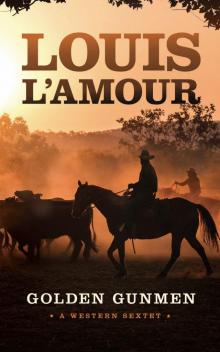 Golden Gunmen
Golden Gunmen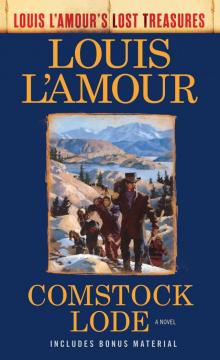 Comstock Lode
Comstock Lode The Lonesome Gods (Louis L'Amour's Lost Treasures)
The Lonesome Gods (Louis L'Amour's Lost Treasures) No Traveller Returns (Lost Treasures)
No Traveller Returns (Lost Treasures) Yondering: Stories
Yondering: Stories The Strong Land
The Strong Land Reilly's Luck (Louis L'Amour's Lost Treasures)
Reilly's Luck (Louis L'Amour's Lost Treasures) The Man Called Noon (Louis L'Amour's Lost Treasures)
The Man Called Noon (Louis L'Amour's Lost Treasures) Draw Straight
Draw Straight Last of the Breed (Louis L'Amour's Lost Treasures)
Last of the Breed (Louis L'Amour's Lost Treasures) Taggart (Louis L'Amour's Lost Treasures)
Taggart (Louis L'Amour's Lost Treasures) The Hopalong Cassidy Novels 4-Book Bundle
The Hopalong Cassidy Novels 4-Book Bundle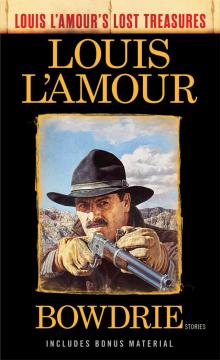 Bowdrie_Louis L'Amour's Lost Treasures
Bowdrie_Louis L'Amour's Lost Treasures Reilly's Luck
Reilly's Luck The Ferguson Rifle (Louis L'Amour's Lost Treasures)
The Ferguson Rifle (Louis L'Amour's Lost Treasures) Sacketts 00 - The Sackett Companion (v5.0)
Sacketts 00 - The Sackett Companion (v5.0) The Chick Bowdrie Short Stories Bundle
The Chick Bowdrie Short Stories Bundle Novel 1974 - The Californios (v5.0)
Novel 1974 - The Californios (v5.0)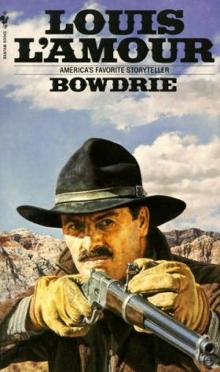 Collection 1983 - Bowdrie (v5.0)
Collection 1983 - Bowdrie (v5.0) Novel 1984 - The Walking Drum (v5.0)
Novel 1984 - The Walking Drum (v5.0) Over on the Dry Side
Over on the Dry Side The Walking Drum
The Walking Drum Novel 1963 - Catlow (v5.0)
Novel 1963 - Catlow (v5.0)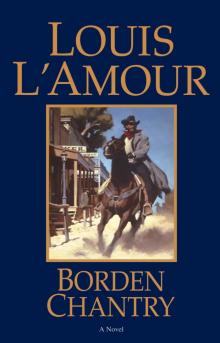 Borden Chantry
Borden Chantry Collection 1983 - Law Of The Desert Born (v5.0)
Collection 1983 - Law Of The Desert Born (v5.0) Ghost Towns
Ghost Towns Jubal Sackett (1985) s-4
Jubal Sackett (1985) s-4 Novel 1953 - Showdown At Yellow Butte
Novel 1953 - Showdown At Yellow Butte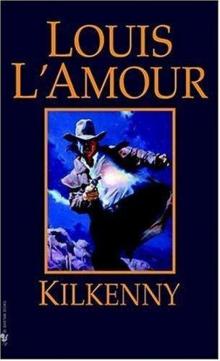 Kilkenny 03 - Kilkenny (v5.0)
Kilkenny 03 - Kilkenny (v5.0)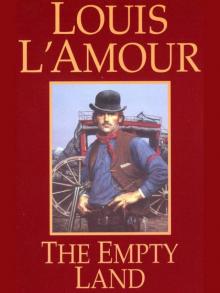 Novel 1969 - The Empty Land (v5.0)
Novel 1969 - The Empty Land (v5.0) Matagorda
Matagorda The First Fast Draw
The First Fast Draw Novel 1950 - Westward The Tide (v5.0)
Novel 1950 - Westward The Tide (v5.0) Ride the Dark Trail s-18
Ride the Dark Trail s-18 Novel 1963 - Fallon (v5.0)
Novel 1963 - Fallon (v5.0) Novel 1964 - Kiowa Trail (v5.0)
Novel 1964 - Kiowa Trail (v5.0) Kilkenny
Kilkenny Riders of the Dawn
Riders of the Dawn Sackett (1961) s-9
Sackett (1961) s-9 Fallon
Fallon Ride the River (1983) s-5
Ride the River (1983) s-5 Mojave Crossing s-11
Mojave Crossing s-11 Novel 1958 - Radigan (v5.0)
Novel 1958 - Radigan (v5.0) The Collected Short Stories of Louis L'Amour, Volume Five
The Collected Short Stories of Louis L'Amour, Volume Five Novel 1953 - Showdown At Yellow Butte (v5.0)
Novel 1953 - Showdown At Yellow Butte (v5.0) Collection 1980 - Yondering
Collection 1980 - Yondering Novel 1957 - Last Stand At Papago Wells (v5.0)
Novel 1957 - Last Stand At Papago Wells (v5.0) North To The Rails
North To The Rails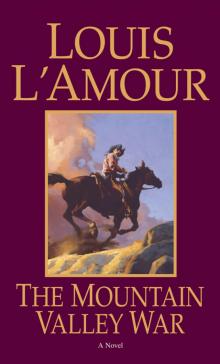 The Kilkenny Series Bundle
The Kilkenny Series Bundle Novel 1972 - Callaghen (v5.0)
Novel 1972 - Callaghen (v5.0) Novel 1970 - Reilly's Luck (v5.0)
Novel 1970 - Reilly's Luck (v5.0)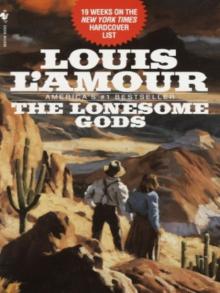 The Lonesome Gods
The Lonesome Gods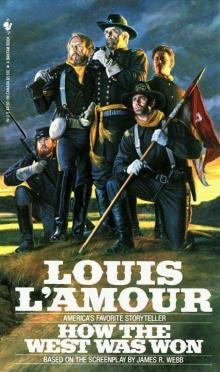 Novel 1963 - How The West Was Won (v5.0)
Novel 1963 - How The West Was Won (v5.0) Collection 2001 - May There Be A Road (v5.0)
Collection 2001 - May There Be A Road (v5.0) Flint
Flint Novel 1968 - Chancy (v5.0)
Novel 1968 - Chancy (v5.0) Volume 1: Unfinished Manuscripts, Mysterious Stories, and Lost Notes from One of the World's Most Popular Novelists
Volume 1: Unfinished Manuscripts, Mysterious Stories, and Lost Notes from One of the World's Most Popular Novelists Novel 1962 - High Lonesome (v5.0)
Novel 1962 - High Lonesome (v5.0) Fair Blows the Wind (Louis L'Amour's Lost Treasures)
Fair Blows the Wind (Louis L'Amour's Lost Treasures) Lando s-8
Lando s-8 The High Graders
The High Graders Collection 1986 - Night Over The Solomons (v5.0)
Collection 1986 - Night Over The Solomons (v5.0) The Collected Short Stories of Louis L'Amour, Volume 3
The Collected Short Stories of Louis L'Amour, Volume 3 Collection 1980 - Yondering (v5.0)
Collection 1980 - Yondering (v5.0) Showdown
Showdown The Quick And The Dead
The Quick And The Dead Novel 1968 - Down The Long Hills (v5.0)
Novel 1968 - Down The Long Hills (v5.0) The Lonely Men s-14
The Lonely Men s-14 Bowdrie (Louis L'Amour's Lost Treasures)
Bowdrie (Louis L'Amour's Lost Treasures) Treasure Mountain s-17
Treasure Mountain s-17 Novel 1959 - Taggart (V5.0)
Novel 1959 - Taggart (V5.0)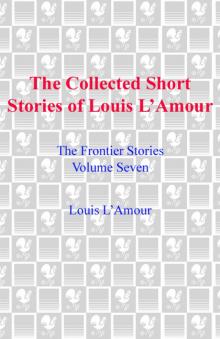 The Collected Short Stories of Louis L'Amour, Volume 7
The Collected Short Stories of Louis L'Amour, Volume 7 Novel 1957 - The Tall Stranger (v5.0)
Novel 1957 - The Tall Stranger (v5.0) Novel 1978 - The Proving Trail (v5.0)
Novel 1978 - The Proving Trail (v5.0) Callaghen (Louis L'Amour's Lost Treasures)
Callaghen (Louis L'Amour's Lost Treasures) Sitka
Sitka Collection 1988 - Lonigan (v5.0)
Collection 1988 - Lonigan (v5.0) The Californios
The Californios Novel 1966 - The Broken Gun (v5.0)
Novel 1966 - The Broken Gun (v5.0)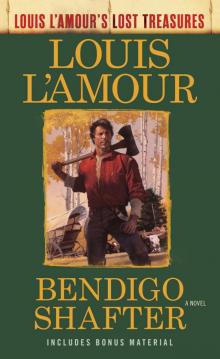 Bendigo Shafter (Louis L'Amour's Lost Treasures)
Bendigo Shafter (Louis L'Amour's Lost Treasures) Novel 1979 - The Iron Marshall (v5.0)
Novel 1979 - The Iron Marshall (v5.0)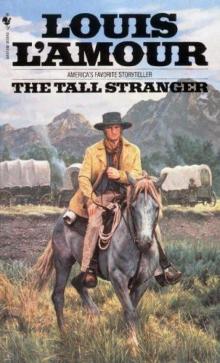 Novel 1957 - The Tall Stranger
Novel 1957 - The Tall Stranger Novel 1965 - The Key-Lock Man (v5.0)
Novel 1965 - The Key-Lock Man (v5.0) Collection 1986 - Dutchman's Flat (v5.0)
Collection 1986 - Dutchman's Flat (v5.0) Lonely On the Mountain s-19
Lonely On the Mountain s-19 Sackett's Land
Sackett's Land The Man Called Noon
The Man Called Noon Hondo (Louis L'Amour's Lost Treasures)
Hondo (Louis L'Amour's Lost Treasures) The Lawless West
The Lawless West The Warrior's Path (1980) s-3
The Warrior's Path (1980) s-3 Novel 1956 - Silver Canyon (v5.0)
Novel 1956 - Silver Canyon (v5.0) The Sky-Liners (1967) s-13
The Sky-Liners (1967) s-13 Mustang Man s-15
Mustang Man s-15 Novel 1971 - Tucker (v5.0)
Novel 1971 - Tucker (v5.0) Off the Mangrove Coast (Louis L'Amour's Lost Treasures)
Off the Mangrove Coast (Louis L'Amour's Lost Treasures) Collection 2005 - Riding For The Brand (v5.0)
Collection 2005 - Riding For The Brand (v5.0) Collection 1986 - The Trail To Crazy Man (v5.0)
Collection 1986 - The Trail To Crazy Man (v5.0) Silver Canyon
Silver Canyon The Man from Battle Flat
The Man from Battle Flat The Daybreakers (1960) s-6
The Daybreakers (1960) s-6 Kid Rodelo (Louis L'Amour's Lost Treasures)
Kid Rodelo (Louis L'Amour's Lost Treasures) Milo Talon
Milo Talon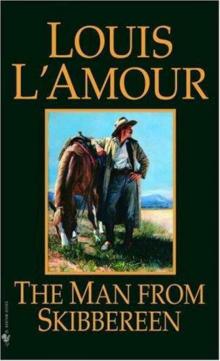 Novel 1973 - The Man From Skibbereen (v5.0)
Novel 1973 - The Man From Skibbereen (v5.0) Novel 1965 - The High Graders (v5.0)
Novel 1965 - The High Graders (v5.0) The Sacket Brand (1965) s-12
The Sacket Brand (1965) s-12 Rivers West
Rivers West Novel 1970 - The Man Called Noon (v5.0)
Novel 1970 - The Man Called Noon (v5.0) Education of a Wandering Man
Education of a Wandering Man The Collected Short Stories of Louis L'Amour, Volume 1
The Collected Short Stories of Louis L'Amour, Volume 1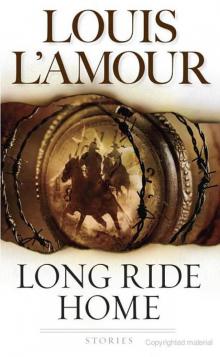 Collection 1989 - Long Ride Home (v5.0)
Collection 1989 - Long Ride Home (v5.0) Callaghen
Callaghen Collection 1999 - Beyond The Great Snow Mountains (v5.0)
Collection 1999 - Beyond The Great Snow Mountains (v5.0) West of the Tularosa
West of the Tularosa End Of the Drive (1997) s-7
End Of the Drive (1997) s-7 Novel 1986 - Last Of The Breed (v5.0)
Novel 1986 - Last Of The Breed (v5.0)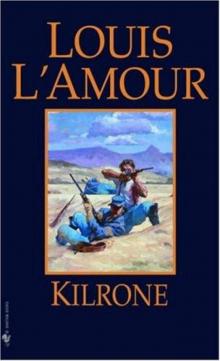 Novel 1966 - Kilrone (v5.0)
Novel 1966 - Kilrone (v5.0) Chancy
Chancy Desert Death-Song
Desert Death-Song Novel 1959 - The First Fast Draw (v5.0)
Novel 1959 - The First Fast Draw (v5.0) Kilkenny 02 - A Man Called Trent (v5.0)
Kilkenny 02 - A Man Called Trent (v5.0) Lost Trails
Lost Trails Novel 1972 - Callaghen
Novel 1972 - Callaghen Novel 1966 - Kid Rodelo (v5.0)
Novel 1966 - Kid Rodelo (v5.0) The Collected Short Stories of Louis L'Amour, Volume 2
The Collected Short Stories of Louis L'Amour, Volume 2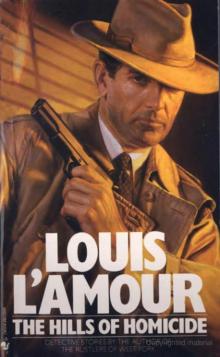 Collection 1983 - The Hills Of Homicide (v5.0)
Collection 1983 - The Hills Of Homicide (v5.0) Novel 1969 - Conagher (v5.0)
Novel 1969 - Conagher (v5.0) Radigan
Radigan High Lonesome
High Lonesome Bendigo Shafter
Bendigo Shafter Novel 1954 - Utah Blaine (As Jim Mayo) (v5.0)
Novel 1954 - Utah Blaine (As Jim Mayo) (v5.0) Collection 1990 - Grub Line Rider (v5.0)
Collection 1990 - Grub Line Rider (v5.0)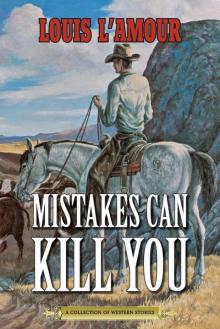 Mistakes Can Kill You
Mistakes Can Kill You The Iron Marshall
The Iron Marshall Novel 1963 - Dark Canyon (v5.0)
Novel 1963 - Dark Canyon (v5.0) Novel 1955 - Heller With A Gun (v5.0)
Novel 1955 - Heller With A Gun (v5.0) Novel 1978 - Bendigo Shafter (v5.0)
Novel 1978 - Bendigo Shafter (v5.0)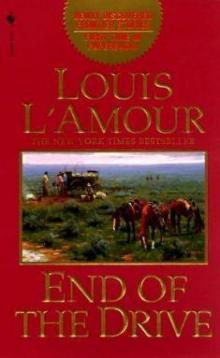 Collection 1997 - End Of The Drive (v5.0)
Collection 1997 - End Of The Drive (v5.0) Fair Blows the Wind
Fair Blows the Wind Talon & Chantry 07 - North To The Rails (v5.0)
Talon & Chantry 07 - North To The Rails (v5.0) The Trail to Crazy Man
The Trail to Crazy Man To the Far Blue Mountains (1976) s-2
To the Far Blue Mountains (1976) s-2 Collection 1981 - Buckskin Run (v5.0)
Collection 1981 - Buckskin Run (v5.0) Collection 2008 - Big Medicine (v5.0)
Collection 2008 - Big Medicine (v5.0) Collection 2003 - From The Listening Hills (v5.0)
Collection 2003 - From The Listening Hills (v5.0)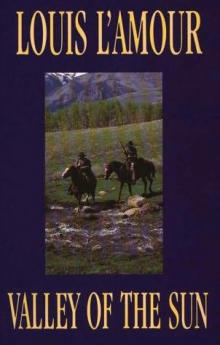 Collection 1995 - Valley Of The Sun (v5.0)
Collection 1995 - Valley Of The Sun (v5.0) Glory Riders
Glory Riders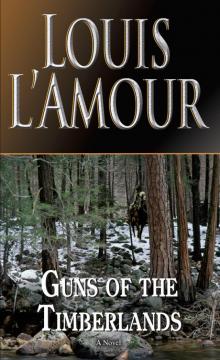 Guns of the Timberlands
Guns of the Timberlands The Collected Short Stories of Louis L'Amour, Volume Four
The Collected Short Stories of Louis L'Amour, Volume Four Novel 1968 - Brionne (v5.0)
Novel 1968 - Brionne (v5.0)